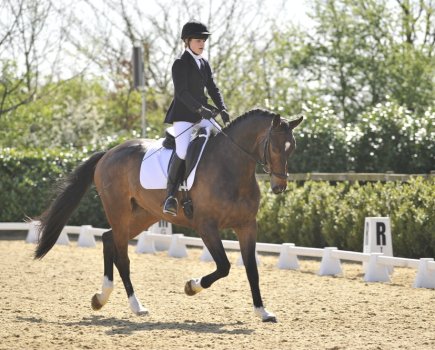“What outline should I ride my horse in?” This a common question that Olympic dressage rider and Dodson & Horrell ambassador Richard Davison is asked.
In the video below, he explains why you should have your horse in many and varied outlines during a training session. This means you then have the skills to vary the outline during a dressage test too, which is important, as the movements required at every level require you to have the ability to ride your horse in a number of different outlines.
To explain a little more about what Richard means about various frames or profiles, he describes how he breaks a typical training session at home down into three phases.
Phase one: neutral
This is the start of a training session, or the warm up. During this early part of the session, Richard rides in what he calls a neutral outline. Here, the head and neck isn’t particularly low, nor flexed (round) and it’s not high. It’s just in that easy position that your horse finds most comfortable having just been tacked up, come out of his stable and at the start of his training session.
During this first phase of ridden work, the principal aim is to warm up your horse’s body systems, such as his cardiovascular system, and help start to increase the blood flow into the big superficial muscle groups.
Phase two: working/training
This is the teaching or improving the horse’s way of going phase. If the day’s goal is to develop his weight transference from the forehand onto the hindquarters, then this will gradually progress to a more uphill frame, in which his neck will be more arched and raised.
The frame of your horse will be influenced by his age and level of training.
Phase three: cooling down
The final outline involves elongation and lengthening of the muscles, and this is apparent in the outline of the horse. It is more of a stretch compared to the neutral position you have at the start of your training session.
Don’t miss the full training features from Richard in the July and August issues of Your Horse








